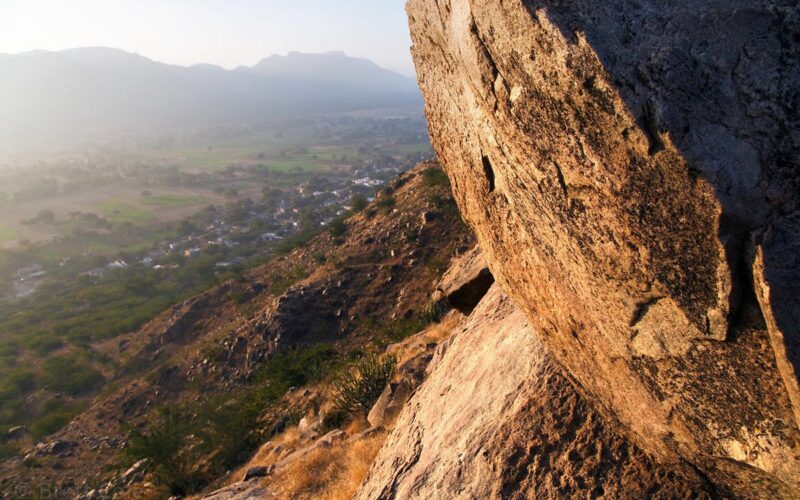The Aravali Valley, also known as the Aravalli Range or Aravalli Mountains, is a prominent mountain range in northwestern India. Stretching across the states of Gujarat, Rajasthan, Haryana, and Delhi, it is one of the oldest mountain ranges in the world. Here’s an overview of the geography of the Aravali Valley:
- Location and Extent: The Aravali Valley runs approximately 800 km from the southwestern tip of Gujarat to Delhi in the northeast. It acts as a natural boundary between the Indian states of Rajasthan and Haryana.
- Topography: The Aravalli Mountains feature a rugged topography, characterized by low hills, plateaus, and peaks. The highest peak in the range is Guru Shikhar in Mount Abu, reaching an elevation of about 1,722 meters above sea level.
- Geological Formation: The Aravali Range is a result of tectonic processes that occurred millions of years ago. It is considered one of the remnants of the ancient Indian craton, dating back to the Proterozoic era.
- Flora and Fauna: The Aravali Valley is rich in biodiversity, supporting a variety of flora and fauna. It houses several wildlife sanctuaries and protected areas that are home to species like leopards, wild boars, jackals, and various bird species. The vegetation includes dry deciduous forests, scrublands, and thorny vegetation.
- Water Resources: The Aravali Range acts as a crucial water divide, separating the river systems of northern and peninsular India. Many rivers originate from the Aravali region, such as the Banas, Luni, and Sabarmati.
- Impact on Climate: The presence of the Aravali Mountains significantly influences the climate of the surrounding areas. It acts as a barrier, causing the southwest monsoon winds to weaken, resulting in lower rainfall in the region’s western parts.
- Human Settlements: The Aravali Valley is dotted with numerous towns and villages, and some larger cities like Udaipur and Ajmer are situated within the range. These settlements are often nestled amidst the hills, adding to the scenic beauty of the region.
- Tourism: The Aravali Valley is a popular tourist destination, attracting nature enthusiasts, adventure seekers, and history buffs alike. It offers opportunities for trekking, wildlife safaris, and visits to historic forts and temples that dot the landscape.
In conclusion, the Aravali Valley is a significant geographical feature of northwestern India, known for its diverse topography, rich biodiversity, and historical significance. The range not only adds to the natural beauty of the region but also plays a crucial role in the hydrology and climate of the surrounding areas. It continues to be a cherished destination for travelers seeking to explore the enchanting landscapes and cultural heritage of India.
